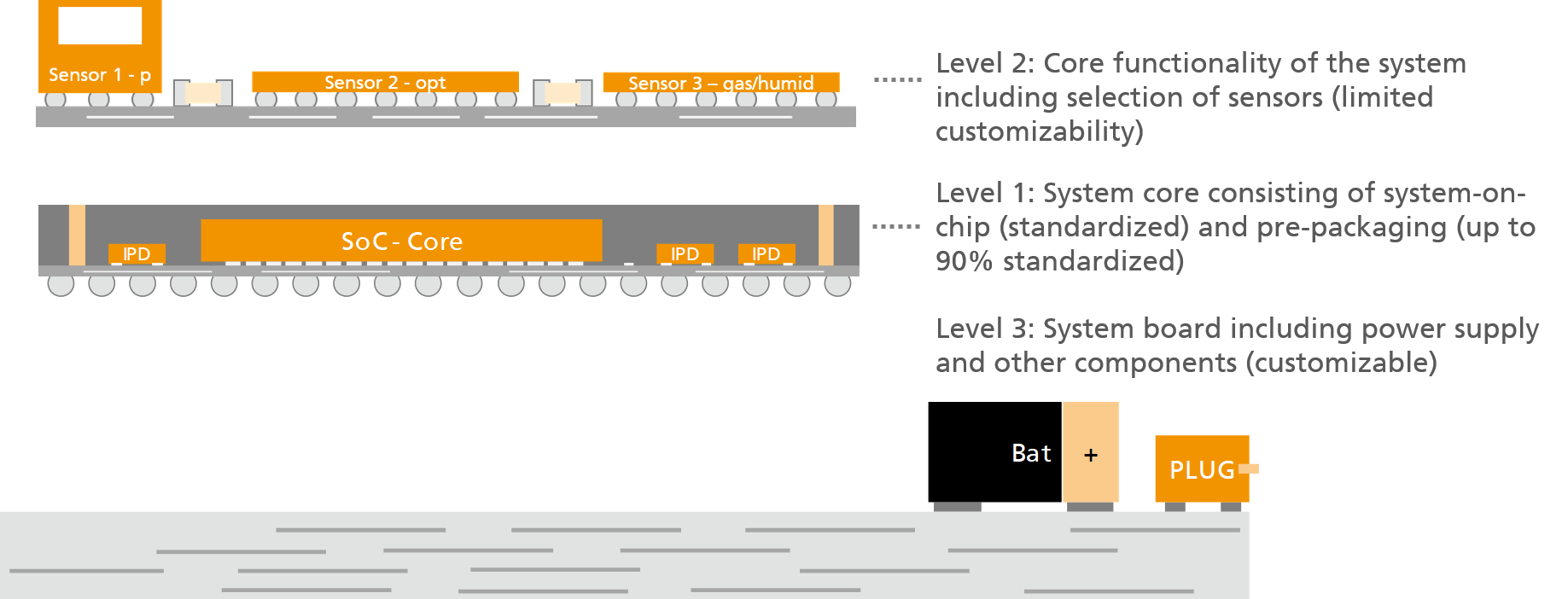USeP sensor platform: High-tech IoT systems for SMEs
The universal sensor platform (USeP) lays the foundation for smaller systems providers to be able to bear the development and manufacturing costs for highly integrated systems in Internet of Things (IoT) environments. This enables small and medium-sized enterprises to utilize various modular and configurable platform elements in a building-block fashion in order to implement their specific ideas and visions in a way that suits them.
The basis of the universal sensor platform is the GLOBALFOUNDRIES 22FDX® technology, which was developed in Dresden. Built according to the silicon-on-insulator principle (fully depleted SOI), the highly integrated chip design permits the manufacture of particularly energy-efficient and cost-effective chips. As such, USeP is very suitable for IoT systems with high demand for local signal and computing power combined with low power consumption (edge computing). So that companies can use the universal sensor platform for as long as possible, the designers have made sure that the results can be transferred to the next generations of semiconductor technology.
The platform was developed by a consortium of four Saxony-based Fraunhofer Institutes, comprising Fraunhofer IPMS, Fraunhofer ENAS, Fraunhofer IZM/ASSID and Fraunhofer IIS/EAS, with the last in the role of project lead. It was supported by Fraunhofer IIS, Fraunhofer IZM, Fraunhofer AISEC and the semiconductor manufacturer GlobalFoundries Dresden. In cooperation with technology partners, the start-up Sensry will be responsible for translating the platform into products and for its further development, so that they can offer customized sensor and communication solutions.
 Fraunhofer Institute for Integrated Circuits IIS, Division Engineering of Adaptive Systems
Fraunhofer Institute for Integrated Circuits IIS, Division Engineering of Adaptive Systems

